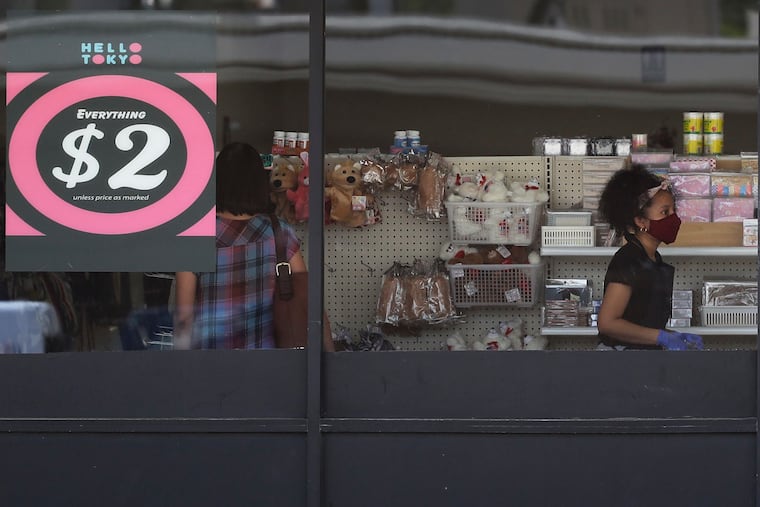Is your small business eligible for PPP forgiveness? Here’s why you may want to wait
The promise of a new stimulus bill, low interest rates, and long grace periods make applying for forgiveness sometime in 2021 the better option.

Last week, the Treasury Department announced new rules that make it easier for small businesses with Paycheck Protection Loans under $50,000 to get forgiveness. But even with these rules, it still makes more sense to wait to apply for forgiveness.
For starters, you’ve got 10 months to apply once your “covered period” ends. The covered period is either eight or 24 weeks from when you received your loan, depending on which period you choose. Most of my clients have chosen the 24-week span and because many received their PPP loans last spring, they won’t need to apply for forgiveness until late 2021. So there’s plenty of time to do the paperwork. “There really shouldn’t be a rush to get forgiveness in my opinion,” said Jacob Cohen, a Philadelphia-based certified public accountant. “I would advise waiting at least a month or two to see how the process goes for other businesses and whether any widespread and unexpected issues come up.”
Next, there’s a good chance lawmakers will pass a new stimulus bill before the end of the year. Most experts expect Washington will eventually provide new stimulus funds, although the timing is unclear. The Senate is currently considering a scaled-down stimulus initiative that includes a stand-alone PPP bill. House leaders remain in tense negotiations with the Trump administration over its details. Even though it’s likely that another stimulus round will offer more support to those businesses still in need, the proposals all include changes in the forgiveness provisions for companies receiving up to as much as $2 million in loans. Considering that any one of these bills could create substantial changes in the forgiveness process, it makes sense to stand by for a while and see how things unfold.
More answers are needed. To date, the Treasury Department has released updates, guidelines, and responses to more than 50 frequently asked questions around the Paycheck Protection Program, and yet many issues remain unresolved. For example, there are questions regarding mergers and acquisitions, how to incorporate changes in business structure that occurred during a forgiveness period, whether the expenses used for forgiveness are deductible, clarifications as to “non-payroll” expenses used in the forgiveness calculation, and gray areas around the restoration of employee head count. Some forms need updating to catch up with all the recent changes, and communications between the Small Business Administration and its member banks are still evolving.
» READ MORE: Why small businesses are seizing the moment during the pandemic to sell online
Many bankers only recently received forgiveness guidance from the Small Business Administration, or SBA — which is itself understaffed and overwhelmed — and, as a result, banks are still putting together their procedures for handling what is expected to be an onslaught of applications. TD Bank, headquartered in Cherry Hill, has temporarily stopped taking any new PPP forgiveness applications for loans under $50,000 because of this rapidly changing environment in order to accommodate the recent SBA revisions. “We will communicate with our customers once the digital application updates are completed and our loan forgiveness portal reopens,” said Jay DesMarteau, TD Bank’s head of commercial distribution.
Your interest rate is only 1%. Some clients tell me that delaying their forgiveness application means they’ll have to pay interest on their Paycheck Protection loan — and they’re right. But the interest rate is only 1%, so even a $50,000 loan, if left outstanding for the next ten months, would cost less than $500. To me, that’s well below the potential costs that may be incurred as a result of an incomplete or flawed application process.
Finally, when it comes time to apply, don’t do it alone. There are now three — yes, three — forms (3508, 3508EZ and 3508S) for applying for forgiveness, depending on the size of your loan and other factors. The rules are complicated, the process is bureaucratic, and you’ve got better things to do with your time. Yes, there are good tools that can help you figure out the numbers such as a helpful calculator provided by the American Institute of Certified Public Accountants, for example. But in the end, you’ll want to get help from a professional.
“I like to think of the PPP Loan Forgiveness Application submission as similar to filing your annual business or personal income tax returns,” said Scott Kregel of Kregel & Company, a CPA firm in Philadelphia. “There are similarities of gathering your supporting documentation and then reporting this on forms with summarized line items, so if you typically rely on an outside professional to assist with your tax filings, then I recommend that you utilize the services around your PPP loan forgiveness with them as well.”
» READ MORE: Six months into the pandemic, these technologies have helped small business workers be productive from home
Considering the challenges that many of us are facing this year in the wake of this unprecedented economic downturn, the right thing for us to do is to focus on our businesses, and not get caught up in an as-of-yet incomplete and complex forgiveness process that will likely take us extra time and create more headaches to finish. So let’s get through 2020? Then we can focus on this task once this year is behind us.